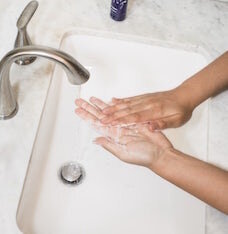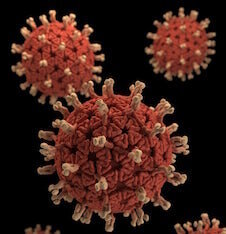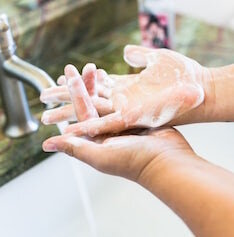How Soap Works

In all my days I’ve never seen anything close to the current flood of public service announcements urging us to “wash our hands with soap.”
It’s as if the stuff was just now brought to Earth by space creatures, and we’re trampling over each other to explore this strange new substance.
Except soap, in various forms, has been with us for thousands of years.
Maybe it’s simply because—although we’ve had it literally at our fingertips our whole lives—we have no idea what it is or how it works.
How about a quick, easy tutorial?
There’s nothing complicated about soap, which partly explains how our ancient ancestors concocted the stuff. The earliest records mentioning it are almost 5,000 years old.
Basically, it’s animal fats (or oils), some ionic salt (or lye), and water.
Yep, combine lye with water, mix in some oils, cook it, then pour it into a mold. You’ll have a bar of soap.
Ah, here’s where most of us misunderstand the function of soap. You see, contrary to popular belief, it doesn’t kill germs.

It washes them away.
So, you’re probably wondering, why doesn’t plain H2O do the same? Why not just rinse off and be clean?
Very good question.
Our bodies are covered in bacteria, and some of them are actually good for us.
But the nasty stuff, the germs that cause disease and infection, hitch a ride not on our skin, but within the oils and grease on our skin.
Now, every 7th grade science student learns that oil and water don't mix. They stay as separated as those same 7th grade boys and girls at their first school dance.
Water, by itself, won’t remove grease from your skin.
Think about washing a really greasy pan in the sink. Just plain water doesn’t do squat. The pan stays greasy.
When you put soap on that pan, however . . .
When I was in high school we had the usual cliques. The nerdy types hung out over here, and the party patrol hung out over there.
I didn’t really belong to either group, but I got along well with both. It’s like I was a connector of sorts and could flit back and forth between them.

Soap is the same way. It’s the great connector.
Your basic soap molecule has two ends. One end is great at binding with water, while the other end is terrific at binding with oil.
Once you lather up your hands with soap, those molecules grab hold of the germ-laden oils. Then, when you rinse, those same molecules attach themselves to the water.
And, voila! The water, the soap, and the germ-filled oil all rushes down the drain.
Your mom and dad scolded you for not using soap, and I’m willing to bet they had no idea how it worked. They just knew that it did.
Now you know it works, too. But you know why.
Tell your kids. Their hands are filthy. Again.
Soap bubble courtesy of Matthew Tkocz on Unsplash
Hand washing image courtesy of Curology on Unsplash
Germ photo courtesy of CDC on Unsplash
Soapy hands courtesy of Donovan Valdivia on Unsplash



